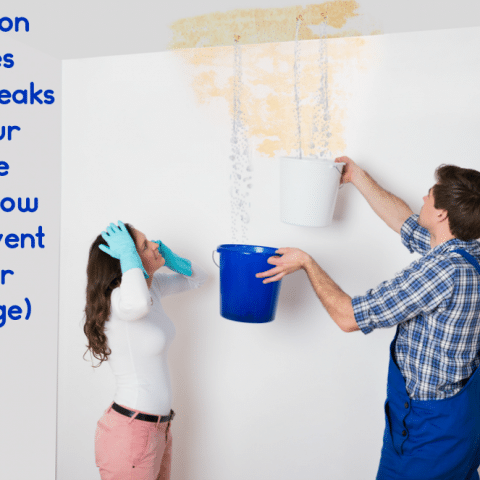What are your beliefs on Finding hidden leaks?

Early discovery of dripping water lines can minimize a potential disaster. Aside from saving you money, it will reduce the irritation and disappointment. The moment you find a leak, calling your plumber for repairs is the very best remedy. Some little water leaks might not be visible. If you can not detect it with your naked eyes, here are some hacks that help.
1. Check Out the Water Meter
Every home has a water meter. Inspecting it is a surefire manner in which aids you find leaks. For beginners, shut off all the water sources. Ensure nobody will purge, utilize the faucet, shower, run the cleaning device or dishwasher. From there, most likely to the meter and watch if it will transform. Considering that no one is utilizing it, there must be no movements. If it moves, that indicates a fast-moving leakage. Likewise, if you identify no changes, wait an hour or more and also examine back once again. This implies you might have a sluggish leakage that could also be below ground.
2. Examine Water Usage
If you detect sudden modifications, regardless of your intake being the same, it suggests that you have leaks in your plumbing system. An unexpected spike in your costs shows a fast-moving leak.
On the other hand, a steady increase monthly, despite having the same habits, reveals you have a sluggish leakage that's additionally slowly intensifying. Call a plumber to completely examine your residential or commercial property, specifically if you feel a cozy location on your floor with piping underneath.
3. Do a Food Coloring Examination
When it involves water intake, 30% originates from toilets. Examination to see if they are running effectively. Decline specks of food color in the storage tank and also wait 10 mins. If the color somehow infiltrates your bowl during that time without flushing, there's a leakage between the tank and dish.
4. Asses Exterior Lines
Don't neglect to inspect your exterior water lines too. Test spigots by connecting a yard tube. Should water seep out of the connection, you have a loosened rubber gasket. Change this and also make sure all connections are tight. If you have actually obtained a sprinkler system, it will certainly assist get it properly analyzed and also maintained yearly. One little leak can squander lots of water and also increase your water expense.
5. Analyze the scenario and also check
Homeowners must make it a routine to check under the sink counters and also also inside cupboards for any kind of bad odor or mold development. These two warnings indicate a leakage so prompt interest is called for. Doing routine examinations, even bi-annually, can conserve you from a significant trouble.
If you recognize your home is already old, keep a watchful eye on your heating units, pipes, pipelines and so on. Look for stainings and also compromising as many appliances and pipelines have a life expectancy. They will likewise naturally degrade because of damage. If you believe dripping water lines in your plumbing system, don't await it to intensify. Call a professional plumber right now so you do not wind up with an awful mess in your house.
Early detection of dripping water lines can minimize a potential catastrophe. Some little water leaks might not be noticeable. Examining it is a proven way that assists you discover leaks. One little leak can throw away loads of water and spike your water costs.
If you believe leaking water lines in your plumbing system, do not wait for it to intensify.
WARNING SIGNS OF WATER LEAKAGE BEHIND THE WALL
PERSISTENT MUSTY ODORS
As water slowly drips from a leaky pipe inside the wall, flooring and sheetrock stay damp and develop an odor similar to wet cardboard. It generates a musty smell that can help you find hidden leaks.
MOLD IN UNUSUAL AREAS
Mold usually grows in wet areas like kitchens, baths and laundry rooms. If you spot the stuff on walls or baseboards in other rooms of the house, it’s a good indicator of undetected water leaks.
STAINS THAT GROW
When mold thrives around a leaky pipe, it sometimes takes hold on the inside surface of the affected wall. A growing stain on otherwise clean sheetrock is often your sign of a hidden plumbing problem.
PEELING OR BUBBLING WALLPAPER / PAINT
This clue is easy to miss in rooms that don’t get much use. When you see wallpaper separating along seams or paint bubbling or flaking off the wall, blame sheetrock that stays wet because of an undetected leak.
BUCKLED CEILINGS AND STAINED FLOORS
If ceilings or floors in bathrooms, kitchens or laundry areas develop structural problems, don’t rule out constant damp inside the walls. Wet sheetrock can affect adjacent framing, flooring and ceilings.
https://www.servicemasterbyzaba.com/blog/how-to-detect-water-leakage-in-walls/

As a keen person who reads about Hacks to detect leaks, I thought sharing that information was a good idea. Those who enjoyed our post if you please remember to pass it around. Kudos for your time. Visit again soon.
Avoid disaster, Call us!